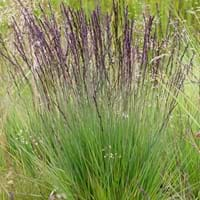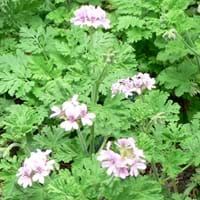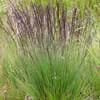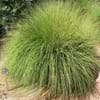Life Span
Perennial
Annual
Type
Grass
Tender Perennial
Origin
Asia, Europe, North Africa
Hybrid origin
Types
purple moor-grass 'Moorhexe', variegated purple moor-grass
herbaceous annuals
Habitat
Boggy areas, Dry and Young forest Heaths, Lowland
Temperate Regions, Tropical Forests
USDA Hardiness Zone
4-8
10-15
AHS Heat Zone
9 - 1
Not Available
Sunset Zone
1a, 1b, 2a, 2b, 3a, 3b, 4, 5, 6, 7, 8, 9, 14, 15, 16, 17
8, 9, 14, 15, 16, 17, 18, 19, 20, 21, 22, 23, 24
Habit
Clump-Forming
Clump-Forming
Flower Color
Dark Purple
White, Light Pink
Flower Color Modifier
Bicolor
Bicolor
Fruit Color
Non Fruiting Plant
Not Available
Leaf Color in Spring
Green, Dark Green
Green, Yellow green
Leaf Color in Summer
Light Green
Green, Gray Green, Yellow green
Leaf Color in Fall
Green, Yellow green, Gold
Green, Gray Green, Yellow green
Leaf Color in Winter
Tan
Light Green
Leaf Shape
Needle like
Linear to lanceolate
Plant Season
Spring, Summer, Fall, Winter
Spring, Summer, Fall, Winter
Sunlight
Full Sun, Partial Sun
Full Sun, Partial Sun
Type of Soil
Clay, Loam, Sand
Loam, Sand
The pH of Soil
Acidic, Neutral
Neutral, Alkaline
Soil Drainage
Average
Well drained
Bloom Time
Late Spring, Summer, Late Summer, Early Fall, Fall
Indeterminate
Tolerances
Not Available
Drought
Where to Plant?
Ground, Pot
Ground
How to Plant?
Divison, Transplanting, Vegetative Reproduction
Root Division, Seedlings
Plant Maintenance
Low
Medium
Watering Requirements
Requires regular watering, Water more frequently during periods of extreme drought
Water when soil is dry
In Summer
Lots of watering
Lots of watering
In Spring
Moderate
Moderate
In Winter
Average Water
Average Water
Soil pH
Acidic, Neutral
Neutral, Alkaline
Soil Type
Clay, Loam, Sand
Loam, Sand
Soil Drainage Capacity
Average
Well drained
Sun Exposure
Full Sun, Partial Sun
Full Sun, Partial Sun
Pruning
Prune in winter, Remove damaged leaves, Remove dead branches, Remove dead leaves
Remove damaged leaves, Remove dead branches, Remove dead leaves
Fertilizers
No need to fertilize every year
All-Purpose Liquid Fertilizer
Pests and Diseases
Pests and diseases free
Red blotch
Plant Tolerance
Not Available
Drought
Flower Petal Number
Single
Single
Fragrant Bark/Stem
No
Yes
Foliage Texture
Fine
Medium
Foliage Sheen
Matte
Matte
Attracts
Not Available
Butterflies
Allergy
Not Available
Not Available
Aesthetic Uses
Showy Purposes, Water gardening
Landscape Designing, Showy Purposes
Beauty Benefits
Not Available
Not Available
Environmental Uses
No fertilizer, pesticides, or herbicides needed
Air purification
Medicinal Uses
No Medicinal Use
Fever, Intestinal irritations, Kidney problems, Respiratory Disorders, Wounds
Part of Plant Used
Whole plant
Flowers, Leaves, Seeds
Other Uses
Used as Ornamental plant
As a tea substitute, Culinary use, Medicinal oil, Oil is used in perfume, soaps, creams, etc., Used as essential oil, Used As Food
Used As Indoor Plant
No
No
Used As Outdoor Plant
Yes
Yes
Garden Design
Container, Foundation, Mixed Border
Bedding Plant, Container, Edging, Hanging Basket, Herb / Vegetable, Houseplant, Mixed Border, Rock Garden / Wall, Tropical
Botanical Name
Molinia caerulea
PELARGONIUM 'Bitter Lemon'
Common Name
purple moor-grass
Bitter Lemon Scented Geranium, Scented Geranium
In Hindi
बैंगनी दलदल घास
Pelargonium
In German
Pfeifengras
Pelargonium
In French
pourpre lande-grass
pélargonium
In Spanish
púrpura amarra-hierba
pelargonium
In Greek
μωβ Moor-γρασίδι
Pelargonium
In Portuguese
purple moor-grass
pelargônio
In Polish
fioletowy Moor-trawa
pelargonia
In Latin
Maurus herba-purpura,
Pelargonium
Phylum
Magnoliophyta
Magnoliophyta
Class
Liliopsida
Magnoliopsida
Order
Cyperales
Geraniales
Family
Poaceae
Geraniaceae
Genus
Molinia
Pelargonium
Clade
Angiosperms, Commelinids, Monocots
Angiosperms, Eudicots, Rosids
Tribe
Not Available
Not Available
Subfamily
Not Available
Not Available
Number of Species
Not Available
Season and Care of Molinia Caerulea and Scented Geranium
Season and care of Molinia Caerulea and Scented Geranium is important to know. While considering everything about Molinia Caerulea and Scented Geranium Care, growing season is an essential factor. Molinia Caerulea season is Spring, Summer, Fall and Winter and Scented Geranium season is Spring, Summer, Fall and Winter. The type of soil for Molinia Caerulea is Clay, Loam, Sand and for Scented Geranium is Loam, Sand while the PH of soil for Molinia Caerulea is Acidic, Neutral and for Scented Geranium is Neutral, Alkaline.
Molinia Caerulea and Scented Geranium Physical Information
Molinia Caerulea and Scented Geranium physical information is very important for comparison. Molinia Caerulea height is 120.00 cm and width 30.00 cm whereas Scented Geranium height is 38.14 cm and width 45.70 cm. The color specification of Molinia Caerulea and Scented Geranium are as follows:
Molinia Caerulea flower color: Dark Purple
Molinia Caerulea leaf color: Green and Dark Green
Scented Geranium flower color: White and Light Pink
- Scented Geranium leaf color: Green and Yellow green
Care of Molinia Caerulea and Scented Geranium
Care of Molinia Caerulea and Scented Geranium include pruning, fertilizers, watering etc. Molinia Caerulea pruning is done Prune in winter, Remove damaged leaves, Remove dead branches and Remove dead leaves and Scented Geranium pruning is done Remove damaged leaves, Remove dead branches and Remove dead leaves. In summer Molinia Caerulea needs Lots of watering and in winter, it needs Average Water. Whereas, in summer Scented Geranium needs Lots of watering and in winter, it needs Average Water.





